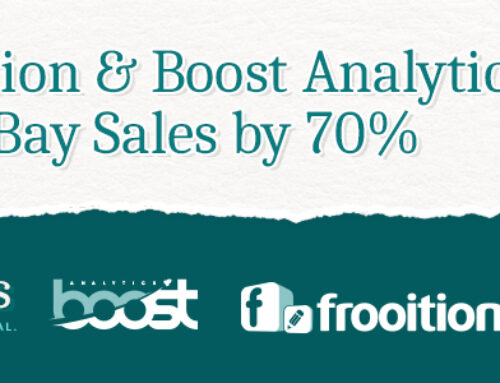
Here are our tips for selling on eBay from professional sellers and experts – dive in.
eBay’s Cassini search engine uses an algorithm to decide which products to display first when a buyer searches for a product on eBay. That algorithm looks at listing titles and descriptions but also takes several other factors into account. You need to know what they are so you can give your listing the best chance of appearing high up in the eBay search results.
So, what are the factors eBay considers in deciding where to rank your listing, and what can you do to improve your eBay search rankings?
eBay Selling Tips
We’ve compiled a list of three metrics that eBay looks at before deciding how to rank your listing in search and our top tips to improve each one.
1. The performance of your listing
Specifically, its sales history (in what quantity and how frequently it sells) and conversion rate (after viewing your listing, what proportion of customers go ahead and buy it).
All new listings have no sales history. eBay tends to put newly listed items a bit higher in rankings to give it a chance to see if it sells. If the listing converts well and gains some sales history, it will stay higher in the rankings. If it doesn’t sell well, it will fall away. What can you do to improve your listings conversion rating?
Ensuring your listing is fully optimised and complies with eBay’s best practices will help. Then, you should make sure that your listing answers every question a buyer could have.
- Include as many images as possible from different angles
- Use a professional eBay listing template to instill trust and improve conversion rates.
- List all the features of your product.
- Highlight all the benefits and uses of your product. What problem is it going to solve for them?
- Make your postage and returns policies very reasonable and transparent.
- Price it competitively
- Offer fast shipping, and make it clear what the shipping options are.
Ensuring the buyer has all the information they need will result in fewer returns and negative feedback. So essentially, you’ve got to make it easy for the buyer to decide to buy your product and know exactly what they’re going to get and when. Make sure you include all dimensions, attachments and so on.
If you find yourself having to answer the same question about a product more than once, then you need to revise your listing to include that information in the description. If a couple of people have messaged you to ask something, you can almost guarantee that there have been other buyers that didn’t bother asking and just went elsewhere. This will save you time answering queries too!
2. Your performance as a seller
This is where your feedback score as a seller and your customer service all come into play. If you don’t provide pleasant and reasonable customer service (as well as a good product!), you will end up with negative feedback from some buyers.
Now and again, you will get a customer that is a bit unreasonable and hard to deal with, but it is always worth it to ensure they are satisfied at the end of the day. A number of negative feedbacks may cost you a lot more in sales than the cost of supplying easy returns and good customer service. If the buyer asks eBay to step in and resolve an issue, that can have a long-lasting effect on your account standing and, therefore, your listings rank in search.
Buyers almost always look to see how much feedback a seller has and what percentage is positive before they buy. Therefore, all other factors being equal, eBay will rank you lower in search than your competitor, who has better feedback.
You should offer at least a 30-day return policy and fast (and preferably free) shipping. Fast shipping is a ranking factor for eBay and can significantly impact whether buyers buy from your listing or your competitors.
3. The performance of your whole eBay product range
Your overall performance as a seller is an essential factor in how eBay ranks your items, including looking at how your whole product range performs rather than just an individual listing. For example, if a seller has a solid history of stocking fast-selling items, eBay is a lot keener to push their listings than if they have a lot of items with no or low sales volume. We have covered this subject before in this article: Are Slow Selling Items Damaging Your eBay Search Relevance?
The advice given from eBay was that any listings with no sales after 90 days should be delisted, optimised and re-listed. If they’re seasonal products, wait until the proper season comes around again to re-list them. It might seem harmless to leave dormant listings sitting on eBay, but it’s not. You might be using the reasoning that someone might buy them eventually, but the truth is that they are pulling all your listings down!
Learn More
To learn more about how Frooition can help you enhance your eBay performance, schedule a free 15-minute discovery call with one of our eBay experts. You can also get a free 30 day trial of our professionally designed eBay Listing Templates and software here: eBay Template Free Trial






